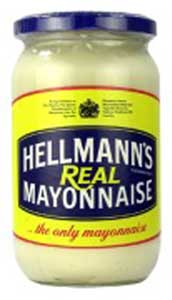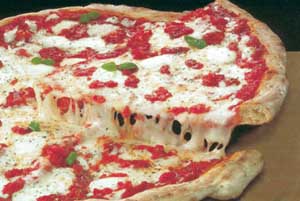-
- Schools adjust to transgender teachers
- Lesbian fire chief to step down
- N.J. conservatives try end run around same-sex marriage
- U.S. groups drop boycott of Wal-Mart over outreach to gay groups
- Soap to feature transgender character
- Giant gay-friendly church welcomed into United Church of Christ
- National News Briefs
- World News Briefs
dining out
Food histories
Published Thursday, 30-Nov-2006 in issue 988
The origins of everyday foods we put into our mouths, when traceable, tell stories that are no less fascinating than when we peer into the histories of art, language, science or politics. Who knew, for example, that the ancient Egyptians grew watermelons? As evidenced by early drawings, they were grown throughout semi-arid sections of the African continent, serving as an important source of water during dry spells.
Or long before Jiffy rolled out those aluminum foil pans filled with corn kernels that our grandmothers shook vigorously over stovetops to get them popping, the Aztecs were parching corn and using the “bursts” to camp up their ceremonial headdresses.
When it comes to the rousing battle over who invented pizza, most culinary historians now credit the Greeks, who occupied southern Italy between 730 and 130 B.C., for rolling out the ancient forerunner of the Italian treat. They reportedly developed a flat round bread topped with vegetables, herbs, onion, garlic, oil and cheese. It is said that the modern pizza, originally consisting of red tomatoes, green fresh basil and white mozzarella cheese on a crust, was created in Naples in 1889 to represent the colors of the Italian flag.
In combing through the annals of culinary history, we’re reminded that the commercial foods we buy in nifty, modern-day packages can be as old as the hills. The late 1800s, in particular, was a prolific time for consumable inventions, when things like Tootsie Rolls, Aunt Jemima pancake mix, Coca-Cola, Fig Newtons and Campbell’s Tomato Soup were introduced to the mass market.
Then, just past the century mark, Americans saw the emergence of peanut butter, A-1 Steak Sauce, Kellogg’s Corn Flakes and the much celebrated ice cream cone, doled out at the 1904 World’s Fair in St. Louis after the concessionaire ran out of paper cups. Facing long lines of customers on a hot day, he turned to a nearby waffle vendor who supplied the waffles as a wrapping for the ice cream.
Mayonnaise, which is now considered a naughty condiment among today’s healthy eaters, was actually considered a delicacy suited for the most elegant meals throughout Europe some 200 years ago. It wasn’t until 1912 that German immigrant Richard Hellman began packing and selling it in jars from his New York deli that mayonnaise would become a staple in salads and sandwiches.
Also once reserved for the upper classes was eggnog, referred to as “egg flip” throughout early 19th century England. The concoction, made from eggs beaten with sugar, milk or cream and some kind of spirit, traveled well to this side of the Atlantic and became significantly more affordable in the U.S. because egg and dairy farms were plentiful.
The recipe for chili remains steeped in dispute, although most culinary historians insist that it didn’t originate from Mexico, as many believed. According to an old Southwestern Native American tale that has since been supported by various modern writers, the first recipe for chili con carne was put on paper in the 17th century by a beautiful nun, Sister Mary of Agreda of Spain. She was known to the Native Americans of the Southwest as “La Dama de Azul,” or “the lady in blue,” but never stuck around to earn herself a blue ribbon from those popular chili cook-offs that sprouted up throughout Texas in the early 1900s.
And, finally, there’s the inventor of canned food, a critical necessity that today’s home cooks and professional chefs can’t do without. European brewer and confectioner Nicolas Appert supposedly spent 14 years experimenting with the process of canning fruits and vegetables safely in glass jars, which finally earned him a reward of 12,000 francs given to him by Napoleon. The innovation became highly useful among the French Navy and then spread to other armed forces throughout Europe.
But it was an Englishman named Peter Durand who took Appert’s revolutionary achievement and obtained a patent for it in 1810. Shortly afterward, Durand used tin-coated steel canisters soldered shut to preserve all sorts of everyday edibles – food for thought the next time you succumb to a fast meal of spaghetti and meatballs from Chef Boyardee.
|
|
Copyright © 2003-2025 Uptown Publications



